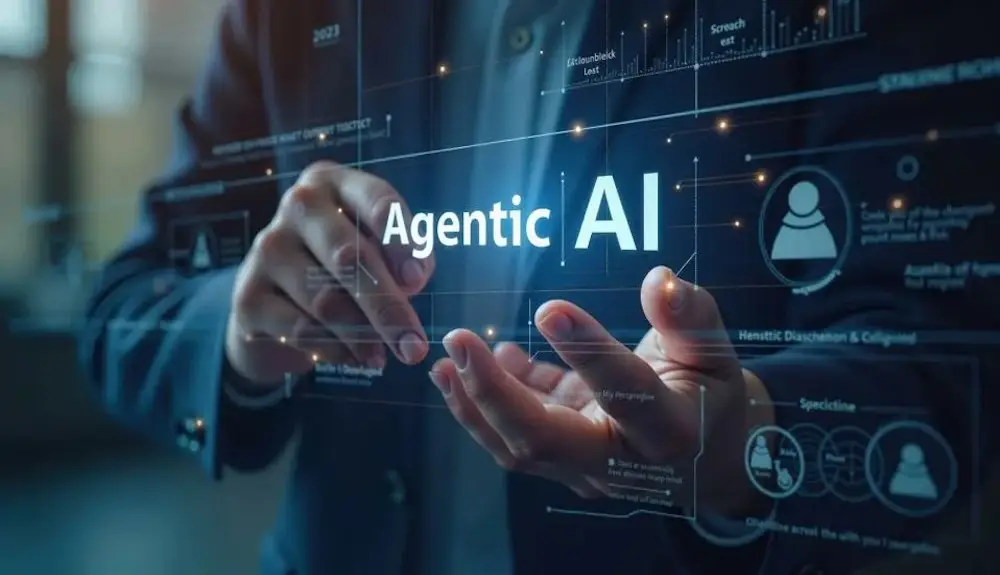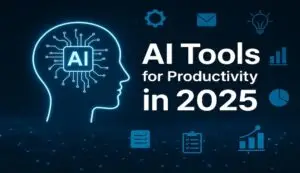After more than two decades leading IT strategy and digital transformation, I’ve seen artificial intelligence evolve from basic automation to the era of generative AI. Now, in 2025, we stand at the threshold of a new paradigm: agentic AI. This isn’t just another incremental upgrade — it’s a fundamental shift in how enterprises orchestrate, automate, and innovate. For decision-makers, understanding agentic AI’s promise, pitfalls, and practical implications is essential for building future-ready organizations.
What Is Agentic AI? A New Era of Autonomous Intelligence
Agentic AI refers to systems comprised of autonomous software “agents” that independently perceive, reason, act, learn, and collaborate to achieve business goals. Unlike traditional AI — which is often limited to narrow tasks or static responses — agentic AI adapts in real time, solves multi-step problems, and executes complex workflows with minimal human intervention. These agents leverage large language models, advanced reasoning, and distributed architectures, enabling them to operate across domains and continuously improve through feedback.
Key Characteristics:
- Autonomy: Agents set and pursue objectives, making decisions dynamically.
- Adaptability: They learn from data and context, refining strategies over time.
- Collaboration: Multiple agents coordinate to solve cross-functional challenges.
- Continuous Improvement: Every interaction is a learning opportunity, driving smarter performance.
Why Agentic AI Matters for Enterprises
1. End-to-End Automation and Orchestration
Agentic AI moves beyond automating isolated tasks. It orchestrates entire business processes — handling exceptions, adapting to new data, and integrating with legacy and modern systems alike. For example, in supply chain management, agentic AI can predict demand, optimize routes, and coordinate with suppliers, all while autonomously resolving disruptions.
2. Personalized and Proactive Customer Experience
By 2028, it’s predicted that 68% of all customer service and support interactions with technology vendors are expected to be handled by agentic AI. These systems deliver more personalized, proactive, and predictive services, anticipating customer needs and resolving issues before they escalate. E-commerce platforms, for instance, use agentic AI to tailor recommendations, automate returns, and provide 24/7 support — all while freeing human agents for complex cases.
3. Enhanced Decision-Making and Efficiency
Agentic AI analyzes vast data streams in real time, surfaces actionable insights, and makes decisions that optimize business outcomes. In finance, agents monitor transactions for fraud, assess risk, and even execute trades autonomously, enabling faster and more accurate responses to market dynamics.
4. Scalability and Cost Reduction
Unlike traditional automation, agentic AI scales seamlessly with business demands. As operational loads increase, these systems adapt without requiring manual intervention or reprogramming — reducing costs and boosting productivity.
Real-World Applications: Agentic AI in Action
| Domain | Use Case | Benefits |
| Customer Service | AI agents resolve 80% of issues end-to-end, personalize support, and escalate only complex cases. | Reduced wait times, higher satisfaction, lower costs |
| Logistics | Agents predict inventory needs, optimize routes, and manage disruptions. | Streamlined operations, fewer delays, cost savings |
| IT Operations | Autonomous ITSM agents identify and resolve issues, automate provisioning, and reduce downtime. | Improved reliability, faster incident response |
| HR & Employee Support | Agents automate recruitment, onboarding, and real-time HR assistance. | Faster hiring, improved employee experience |
| Cybersecurity | Agents detect, isolate, and remediate threats autonomously, augmenting human teams. | Enhanced security, reduced workload |
| Marketing | AI agents manage campaigns, optimize spend, and personalize outreach. | Higher ROI, more effective targeting |
| Manufacturing | Agents monitor equipment, predict failures, and automate maintenance. | Less downtime, increased productivity |
| Legal/Compliance | AI co-pilots draft contracts, conduct due diligence, and ensure regulatory alignment. | Consistency, speed, reduced legal risk |
The Strategic Imperative: How to Prepare for Agentic AI
1. Data and Infrastructure Readiness
Agentic AI thrives on high-quality, integrated data and robust infrastructure. Enterprises must invest in unified data pipelines, cloud-native platforms, and API-driven architectures. Without these foundations, even the most advanced agents will falter.
2. Governance, Security, and Human Oversight
Autonomy brings new risks. Enterprises must establish real-time, adaptive governance to monitor agent actions, ensure compliance, and maintain transparency. Human oversight remains vital — especially for sensitive decisions in finance, healthcare, and legal domains. Explainability and auditability are non-negotiable for trust and regulatory approval.
3. Change Management and Culture
Agentic AI is as much a cultural shift as a technical one. Employees must understand that agents are collaborators, not replacements. Proactive change management, upskilling, and clear communication are essential to avoid resistance and maximize value.
4. Start Small, Scale Fast
Most agentic AI projects fail to scale past pilots due to unclear ROI, integration challenges, or lack of organizational readiness. Successful enterprises start with targeted use cases (e.g., IT support or customer service), rapidly prototype, and expand as benefits become tangible.
Feedback Loops: The Engine of Continuous Improvement
A defining feature of agentic AI is its ability to learn and improve through feedback. Each interaction, decision, and outcome is analyzed, allowing agents to refine their strategies and adapt to evolving business needs. Enterprises should design feedback mechanisms — such as performance dashboards, user surveys, and real-time monitoring — to ensure agents are aligned with business goals and can pivot as conditions change.
For example, Lenovo’s IT operations now leverage agentic AI for self-healing infrastructure. The system learns from every incident, predicting and preventing future disruptions, which has allowed the company to manage a sprawling global IT footprint with greater efficiency and fewer resources.
Challenges and Cautions
While agentic AI offers transformative potential, it also introduces new complexities:
- Integration Complexity: Legacy systems may lack the APIs or data quality needed for seamless agentic workflows.
- Governance Gaps: Without real-time oversight, agents can drift from business objectives or act unpredictably.
- Security Risks: Autonomous agents expand the attack surface and require robust security protocols.
- Process Consistency: Agents may handle the same process differently each time unless process standardization is enforced.
- Change Fatigue: Employees may resist or misunderstand the role of agents without clear change management.
Table: Agentic AI vs. Traditional and Generative AI
| AI Type | Key Capabilities | Limitations | Enterprise Impact |
| Traditional AI | Automates routine, rule-based tasks | Lacks adaptability, limited scope | Cost savings, incremental efficiency |
| Generative AI | Creates content, answers complex queries | Not goal-driven, needs human prompts | Enhanced creativity, knowledge management |
| Agentic AI | Sets goals, acts autonomously, adapts, collaborates | Requires robust data, governance, oversight | End-to-end automation, proactive decision-making, new business models |
An Important Question for Leaders
If agentic AI were deployed across your organization tomorrow, would your data, processes, and teams empower it to achieve business outcomes, or would gaps in readiness turn autonomy into chaos?
If your enterprise has invested in unified data, agile infrastructure, adaptive governance, and a culture of collaboration, agentic AI can be a force multiplier — driving efficiency, resilience, and innovation at scale. If not, the risks of fragmentation, security lapses, and operational drift will outweigh the rewards.
Final Thought
Agentic AI is not just another tool — it’s a new operating model for the enterprise. The organizations that thrive will be those that combine the power of autonomous agents with the wisdom of human oversight and the discipline of strategic execution. The future is agentic. Are you ready to lead?




